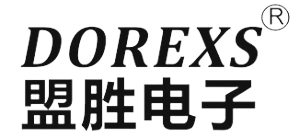RFI refers to an unwanted electromagnetic energy in the frequency range when it is generated in radio communication. The frequency range of the conduction phenomenon ranges from 10kHz to 30MHz; the frequency range of the radiation phenomenon is between 30MHz and 1GHz.
There are two reasons why RFI must be considered: (1) Their products must operate normally in their working environments, but the working environment is often accompanied by severe RFI. (2) Their products cant radiate RFI to ensure that they do not interfere with RF communications that are critical to both health and safety. The law has made provision for reliable RF communications to ensure RFI control of electronic devices.
RFI is transmitted by radiation (electromagnetic waves in free space) and transmitted through the signal line and the AC power system.
Radiation - one of the most important sources of RFI radiation from electronic devices is the AC power line. Because the length of the AC power line reaches the 1/4 of the corresponding wavelength of the digital equipment and the switching power supply, this constitutes an effective antenna.
Conduction—The RFI is conducted in two modes on the AC power supply system. The common film (asymmetric) RFI occurs in two paths: on line ground (L-G) and neutral ground (N-G), while differential mode (symmetric) RFI appears on the line neutral line (L-N) in the form of voltage.
With the rapid development of the world today, more and more high power electrical energy is produced. At the same time, more and more low power electrical energy is used for data transmission and processing, so that it produces more influence and even the noise interference destroys electronic equipment. Power line interference filter is one of the main filtering methods used to control the RFI from the electronic device to enter (potential equipment malfunction) and to come out (potential interference to other systems or RF communication). By controlling the RFI into the power plug, the power line filter also greatly inhibits the radiation of RFI.
Power line filter is a multi channel network passive component, which is arranged in double low channel filter structure. One network is used for common mode attenuation, and the other is for differential mode attenuation. The network provides RF energy attenuation in the "stop band" (usually more than 10kHz) of the filter, while the current (50-60Hz) is essentially not attenuated.
As a passive and bilateral network, the power line interference filter has a complex switching characteristic, which greatly depends on the source and the load impedance. The attenuation characteristic of the filter is illustrated by the value of the conversion characteristic. However, in the power line environment, the source and load impedance are uncertain. Therefore, there is a standard method to verify the consistency of the filter in industry: measuring the attenuation level with 50 ohm resistive source and load end. The measured value is defined as the insertion loss (I.L) of the filter:
I..L. = 10 log * (P(l)(Ref)/P(l))
Here P (L) (Ref) is the power converted from the source to the load (without the filter);
P (L) is the conversion power after inserting a filter between the source and the load.
The insertion loss can also be expressed in the following voltage or current ratio:
I.L. = 20 log *(V(l)(Ref)/V(l)) I.L. = 20 log *(I(l)(Ref)/I(l))
Here V (L) (Ref) and I (L) (Ref) are the measured values without filter,
V (L) and I (L) are measured values with filter.
The insertion loss, which is worth noting, does not represent the RFI attenuation performance provided by the filter in the power line environment. In the power line environment, the relative value of the source and the load impedance must be estimated, and the appropriate filtering structure is chosen to make the maximum possible impedance mismatch at each terminal. The filter depends on the performance of the terminal impedance, which is the basis of the concept of the “mismatch network”.
The conduction test requires a quiet RF environment - a shield shell - a line impedance stabilization network, and a RF voltage instrument (such as FM receiver or spectrum analyzer). The RF environment of the test should be at least below the required specification limit of 20dB in order to obtain accurate test results. A linear impedance stabilization network (LISN) is needed to establish a desired source impedance for the input of the power line, which is a very important part of the test program because the impedance directly affects the measured radiation level. In addition, the correct broadband measurement of the receiver is also a key parameter of the test.
Post time: Mar-30-2021







